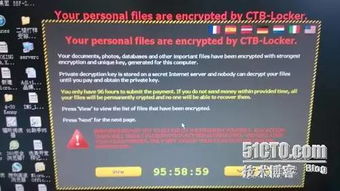
Bitcoin ransomware has emerged as a significant threat in the digital age, leveraging the anonymous nature of cryptocurrencies to extort money from victims. This article delves into the basics of Bitcoin ransomware, its impact, and ways to protect against it.

Bitcoin ransomware is a type of malware that encrypts a victim's files, rendering them inaccessible. The attackers demand a ransom, typically in Bitcoin, to decrypt the files. The ransom amount can vary, but it often ranges from a few hundred to several thousand dollars worth of Bitcoin.

Bitcoin ransomware typically spreads through malicious email attachments, infected websites, or compromised software. Once the malware is installed on a victim's computer, it begins encrypting files. The ransom note, usually in a text or HTML file, informs the victim of the encryption and provides instructions on how to pay the ransom.

The impact of Bitcoin ransomware can be devastating. For individuals, it can lead to the loss of personal photos, documents, and other important files. For businesses, the consequences can be even more severe, including financial loss, reputational damage, and operational disruptions.

Preventing Bitcoin ransomware involves a combination of education, cybersecurity practices, and regular backups. Here are some key steps to protect against ransomware:
Be cautious of email attachments, especially from unknown senders.
Keep your operating system and software up to date with the latest security patches.
Use reputable antivirus and anti-malware software.
Regularly backup your files to an external drive or cloud storage.
Train employees on cybersecurity best practices.

Recognizing Bitcoin ransomware is crucial for early detection and mitigation. Here are some signs to look out for:
Files become inaccessible or have a new file extension.
Pop-up messages appear on your computer, demanding a ransom.
System performance slows down significantly.

If you suspect that your computer has been infected with Bitcoin ransomware, here are some steps to take:
Do not pay the ransom. Paying does not guarantee that you will get your files back.
Isolate the infected device from the network to prevent the spread of the malware.
Seek assistance from a professional to remove the malware.

Bitcoin ransomware is a serious threat that requires vigilance and proactive measures. By understanding how it works, recognizing the signs, and taking preventive steps, individuals and businesses can protect themselves from this malicious software.
